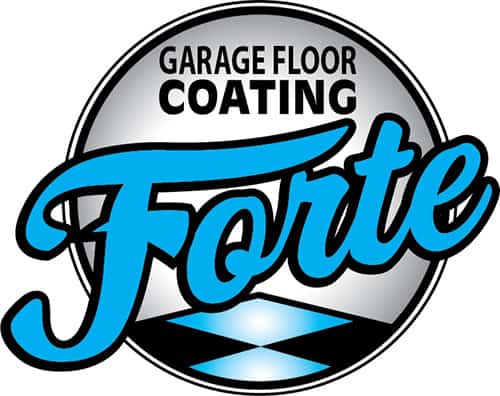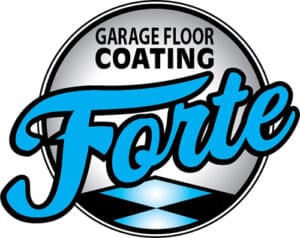Yes, epoxy floors can become slippery when wet, but with proper treatments and additives, they can offer significantly improved slip resistance. It’s important to note that one of the many strengths of epoxy flooring is its versatility and adaptability. By incorporating specific materials into the epoxy mix, not only can you enhance the safety of your floors, making them more suitable for a wide range of environments, but you also benefit from the durability, aesthetic appeal, and easy maintenance that epoxy floors are renowned for.
The Science Behind Epoxy and Its Interaction with Water
Epoxy floors, renowned for their durability and aesthetic appeal, have a complex relationship with water. The epoxy surface’s inherent properties, coupled with external conditions such as moisture and spills, can influence its interaction with water. Understanding this interaction is key to maximizing the grip and ensuring safety in both commercial and industrial settings.
Moreover, the choice of finish plays a crucial role in how water interacts with the epoxy surface. A glossy finish, while aesthetically pleasing and easy to clean, may pose a higher risk of becoming slippery when wet. Conversely, finishes that incorporate anti-slip materials can provide a durable, non-skid surface, ideal for areas with heavy foot traffic or prone to liquid spillage. This concern is particularly relevant in commercial and industrial settings, where safety is paramount, and the flooring solution must accommodate a variety of conditions, from oil spills to excess water.
Understanding the science behind epoxy’s interaction with water helps in choosing the right type of epoxy flooring, one that ensures maximum grip and maintains a clean, non-skid floor regardless of the atmospheric conditions or the introduction of water into the space.
Comparing Slip Resistance: Epoxy Floors vs. Other Flooring Options
When it comes to slip resistance, not all flooring solutions are created equal. Epoxy flooring, when compared to traditional concrete floors or smooth surfaces, can be tailored to offer superior slip resistance. This is achieved through finishes, textures, and the introduction of specific anti-slip additives, making epoxy floors a versatile choice for areas experiencing heavy foot traffic or frequent contact with water.
Additionally, the comparative advantages of epoxy flooring extend beyond just slip resistance. When analyzing the broader spectrum of flooring options, including tiles with grout lines, smooth concrete, or even rubber mats, epoxy floors stand out for their ability to integrate seamlessly with various anti-slip materials and finishes. These range from coarse to gentle textures, designed to enhance safety without compromising on aesthetics.
The Role of Aluminum Oxides and Non-Skid Additives
The incorporation of aluminum oxides and non-skid additives into the epoxy mixture significantly enhances the floor’s resistance to slips. These materials, known for their abrasive texture, contribute to creating a more secure footing, especially in wet conditions. By selecting the right type of finish and additive, one can significantly reduce the risk of slip-and-fall accidents on an epoxy surface.
The Impact of Environment on Epoxy Floor Coatings
The environment plays a crucial role in the performance of epoxy floor coatings. In a moist environment, or where liquid spills are common, choosing an epoxy solution with built-in anti-slip properties is essential. For spaces prone to oil spill or heavy foot traffic, the epoxy mixture can be customized with additives like silica sand or shark grip to enhance slip resistance and ensure a durable, non-skid surface.
Epoxy Garage Floors: Safety Features and Anti-Slip Solutions
Epoxy garage floors, in particular, benefit from the addition of anti-slip coatings and materials such as synthetic rubber mats or aluminum oxide. These solutions provide a permanent, anti-slip surface ideal for garage environments, where spills, moisture, and smooth tires are common.
In the realm of epoxy garage floors, the question of safety, particularly under wet conditions, frequently arises. The integration of anti-slip additives, such as aluminum oxide or silica sand, into the epoxy resin mix is a critical response to these concerns. These materials contribute to creating a durable surface with an abrasive texture, significantly enhancing the grip in moisture-rich environments or when spills occur. This approach is essential in garages, where foot traffic, oil spills, and water contact are common.
Furthermore, the choice of finishes—from glossy to matte—can be tailored to increase slip resistance without sacrificing the aesthetic appeal of the space. Epoxy flooring offers a versatile and effective flooring solution, capable of providing maximum grip under wet conditions while maintaining a clean, attractive appearance.
Maintaining Your Epoxy Floor: Preventing Slipperiness and Yellowing Over Time
Maintaining an epoxy floor to prevent slipperiness involves regular cleaning to remove spills and moisture. Additionally, reapplication of anti-slip coatings can help maintain the floor’s slip resistance over time. To prevent yellowing, especially in epoxy garage floors exposed to sunlight, selecting UV-resistant epoxy coatings is crucial. To ensure the longevity and safety of your epoxy flooring, proper maintenance is key. Here are five essential practices for keeping your epoxy floor slip-resistant and vibrant over time:
- Regular Cleaning: Daily or weekly cleaning with mild detergents or epoxy-specific cleaners will remove dust, dirt, and spills without damaging the floor’s surface.
- Immediate Spill Cleanup: Quickly addressing oil, water, or any liquid spills is crucial for maintaining the floor’s safety and preserving its anti-slip texture.
- Use of Mats and Rugs: Strategically placing mats or rugs in high-traffic or moisture-prone areas can absorb excess water and reduce slip risks, while also keeping the area clean.
- UV Protection for Sun-Exposed Areas: Applying a UV-resistant topcoat is essential for floors in sunny areas to prevent yellowing and maintain the epoxy’s color and appearance over time.
Choosing the Right Epoxy Coating for Slip Resistance and Aesthetics
The choice of epoxy coating should balance slip resistance with aesthetic appeal. With various types of epoxy flooring available, including self-leveling epoxy floors and flake epoxy coatings, selecting the right type based on the space’s specific needs and foot traffic levels is crucial. The right epoxy floor will offer durability, safety, and a visually appealing finish that complements the space.

